The German Scene
Robert Sievert
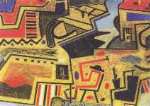 Thomas Tuchel: "Painted Planet"
Thomas Tuchel: "Painted Planet"
 Andreas Schiller: "Lemons"
Andreas Schiller: "Lemons"
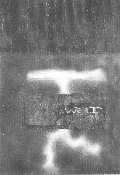 Hannah Stütz-Mentzel: "War"
Hannah Stütz-Mentzel: "War"
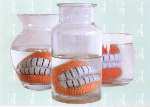 Patricia Waller: Needleworks
Patricia Waller: Needleworks
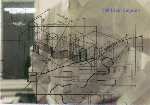 William Engelen
William Engelen
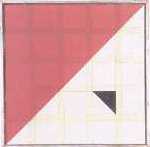 Friedrich Vordemberge-Gildewart: Komposition Nr. 75 (1933)
Friedrich Vordemberge-Gildewart: Komposition Nr. 75 (1933)
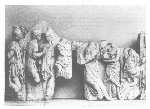 The Telelphos Frieze (detail) (Staatliche Museen zu Berlin)
The Telelphos Frieze (detail) (Staatliche Museen zu Berlin)
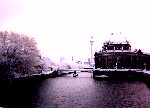 View of the Pergamon Museum and Spree River
View of the Pergamon Museum and Spree River
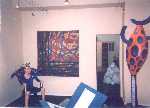 A gallery along the Augusttrasse
A gallery along the Augusttrasse
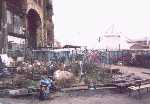 Back yard of artists' building, Oranienbergstrasse
Back yard of artists' building, Oranienbergstrasse
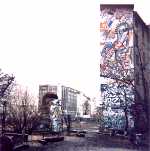 Side wall mural of artists' building, 72 Oranienbergstrasse
Side wall mural of artists' building, 72 Oranienbergstrasse
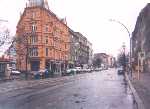 Building on Orienbergstrasse
Building on Orienbergstrasse
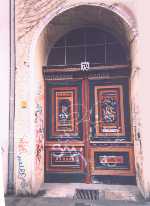 Painted doorway, Mitte
Painted doorway, Mitte
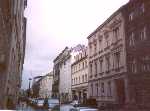 Auguststrasse
Auguststrasse
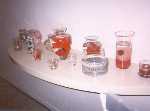 Installation at Gallerie Dreschler, Berlin (artist: Patricia Waller)
Installation at Gallerie Dreschler, Berlin (artist: Patricia Waller)
One morning in November I was driving to work when I heard this report on "Morning Edition" about the Berlin Art World. The reporter interviewed artists and museum people who gave a kaleidoscopic account of what was going on. When asked if Berlin was a hot new European Art Capital, one artist said.."nothing in Europe is hot, but you might say that Berlin is about the warmest thing going"" I was inspired to make a visit. I would use my double edge sword of being both an artist and a writer to insinuate myself into the situation.
I began visiting as many art venues on line that I could and wrote to a number of galleries. By the time I was ready to go I had a list.
On the way over the Atlantic I caught up on my reading. I took with me several New Yorkers that I had intended to finish. One of them contained a review of the Fairie Painting Show at the Frick. Schjeldahl said some interesting things in this review, among them was that the Avante Garde was dead. This rumor has been traveling about for awhile I myself am too eclectic to make such a generalized statement But his assertion was very helpful to me as I confronted the German Art World in Berlin and tried to make an assessment.
I was on my way to Berlin to see in person what was happening. New Galleries were opening, a new scene in the Mitte, a Bohemian section of the city that recalled the Village or Soho in their heyday.
My hotel/pension was on Friedrichstrasse which turned out to be central to the Mitte, the whole scene was walking distance from my Hotel.
Mitte is literally the middle of Berlin. It is the oldest section as well and while I read that it had Medieval origins, to me the buildings didn't seem more than 100 years old, the tallest of which was no more than six stories. The architecture was quite grand. Once you got off the main Strasse the buildings were more complex with arch tunneled passages into courtyards, stone facades that often were crowned by broken pediments with scroll design The interiors were large rooms with extremely high ceilings. A wonderful setting for art.
I started out on FriedrichStrasse. I just have to say that It was impossible not to be in total admiration of this broad, busy, boulevard . Four wide lanes of streaming traffic, bright electric trolley trains two and three cars long with bright well lit shops nestled at the base of tall glum structures. The hustle of the people on the streets and the shops reminded me of upper Broadway.
It was problematic getting to the Walter Bischoff Gallery. The door on the street, huge and wooden was locked and there was no bell with the gallery name.. When you got to the second floor, the door was locked again..They were showing the work of Hannah Stütz-Mentzel. Talk about glum, these paintings were out and out melancholic. Huge canvasses stained with dark petroleum colored stains that upon regard seemed to have no interior. They were obviously the product of some sort of staining process that built up a chemical surface. The one painting that had a written message said"war". A heavy field of darkness seemed to be descending on this legend as some light appeared to be crackling in back of it. Hanna has her heart in the right place but her art is very depressing. In another room was a series of paintings, this time blue , but with an equally leaden effect When I first got to the gallery I had to ring a bell to be admitted. I was let in by a women who seemed to be in charge. Very straight nervous type who was not sure if she should speak to me. Since I had written to this gallery ahead of time I tried to make some sort of contact. "Is it possible to talk to Mr. Bischoff" ? I asked. "No" It was explained that Mr. Bischoff lived in a castle in the Black Forest. He only came to openings and did not make appointments. My, what a wonderful person he must be. I looked around, It was dark, the grey overcast afternoon seemed to pervade the rooms of this gallery. Things were not quite as they should be, paintings were leaning against the wall,.piled one on top of each other. Inwardly I shuddered. Is this what I had traveled half way around the world to see? There was a lack of both inspiration and professionalism in these rooms. Nothing here could transform the sodden afternoon.
Making my way along Friedrichstrasse I came to Orienburgerstrasse, where the two, three, and four car trolleys made sweeping turns. I walked down the street until I came to a most unusual building. It seemed once to have been a factory or public space that had been converted into artist studios. I stepped inside and made my way up a staircase onto a foyer. Something drew me along. The walls and every surface of this building were painted with weird murals. Freaky nudes, lots of black and white, things written in German and English . It was the east village all over again, primative art but very visual.
Upstairs through a large doorway, up more stairs and then a hall with many studios. The first one was not so interesting, but then I got to the studio of Andreas Schiller. Andreas paints serial images, over and over. He had a show last year in Soho, of lemons. Many many lemons all done on the same size canvases. He was working on a series of bottles, as he gave me the run down on the German art scene. "nobody sells much art in Germany" there are a lot of new galleries but few sales. Most of the new Galleries are on Auguststrasse and Leinenstrasse. It's all avante- garde, little real painting" He called some galleries "elephant galleries" I pushed him to identify what that was and which were the galleries he was talking about. I guess I got the message, galleries with the money to make a splash . One had to feel for Andreas. He was a talent, his work was good, he even fit it into a rationale of avant garde presentation. But the prospect of major success seemed dim for him in this no market city. This building that his studio was in was owned by the government and the studios were provided to the artist on some sort of grant. He did have an agent.
Not Far away was the noted Boulevard "Unter Der Linden". This grand avenue ended at the Brandenburg Tor. A masterpiece of neo-classical architecture, it is the "heart of Berlin". It's on all the city literature as a logo. Starting east from the "Tor", Unter Den Linden is lined with huge modern glass and steel buildings that can only be corporate in nature. But Where's the Art? There was very little corporate art to be seen in Berlin. These buildings seemed almost in disuse, locked and closed. Was this why there were no art sales in Berlin? Maybe I was just in the wrong part of the city.
Finally, walking along Auguststrasse I began to see the gallery scene. It greatly resembled the Soho I remember in the seventies. Avant-Garde and minimalism seemed to dominate. The galleries were street level shops, some quite adequate to show large art..
The Barbara Thumm Gallery was showing the works of William Engleman, which graphically looked a great deal like Sol Levitt minimalist drawings. They were black linear designs, that could have been plans for almost anything. These lines were drafted onto clear sheets of plastic that were hung from the ceiling so as to make a maze of the gallery. There were slides being projected through some of the work onto the wall behind. Some of the drawings were actually scores for musical events. The one in the front window is a score for voice and finger snapping. Engleman is a Dutch artist who is interested in notation systems. This material seemed overly familiar to me and almost retro. I remember Malcolm Goldstien playing from drawings and texts on his violin in the early seventies. It was interesting only in that it echoed so many familiar styles and concerns seen in New York two decades ago.
One of the galleries that Andreas mentioned as an "elephant gallery" was the Galerie Dreschler Berlin. As I walked in, I was not turned-on by the front gallery. It was needlework pictures by Patricia Waller. They sort of looked like bad video images at a distance. In the front gallery was flat work, mounted on board and framed. But then in an extending gallery was a shelf of needlework sculptures. Here the show took off. Suddenly in large glass jars this artist "knitted"- "crocheted"? a series of specimens that she submerged in jars of water. Intestines, false teeth, eyeballs and the like all cheerfully displayed. I have seen this sort of thing before. Bob Smithson had a show of scientific specimens at the Alan Wayne Gallery in the sixties, truly disgusting images of viscera suspended in jars of liquid. But this artist made bright allusions to anatomical objects that were not at all visceral, anatomy as form, a successful avoidance of gore.
Other Galleries The Gallerie Berinson was showing the works of a painter who died in 1962. Friedrich VordemBerge painted canvases that could easily pass for the work of Agnes Martin. Did his come first? The paintings were grids drawn on canvas with pencil. Selected sections were painted in a design-like manner. The effect was attractive.
I began to get the feel of this place. The quaint urban reclaimed area was now the focus of a new enthusiasm. " We can have Modern Art in Berlin." It was no where else in the city. Berlin has a shocking dearth of modern art. Forget "post-modern" I think I hit most of the major Museums. A man at the imformation desk in the Pergamon Museum confided to me"We don't have much modern art in Berlin" I guess the Nazi era kind of wiped it out. For whatever reason, I saw little art that reflected the twentieth century. A few paintings from the nineteenth were in the National Gallery on the second floor above all the ancient art.
I don't want to get too far away from the Pergamon Museum with its great Hellenistic Friezes. Looking back I realize that I did not consider visiting this site until I was sitting in a café going through my "Lonely Planet guide to Berlin." Suddenly in looking over the Museum lists it jumped out at me. Pergamon Museum I have studied this monument in slides and actually saw the "Telephonos Frieze "when it visited the Metropolitan Museum, several years back. I am thrilled by Hellenistic work. And The Pergamon Altar is the finest example of existing Hellenistic Sculpture. After seeing it the first time I had to go back and see it again and again. I walked through a cold Berlin snowstorm to see it the second time. Nothing in the whole city was as esthetically gratifying as viewing this massive reconstruction. Several steps away was the great Ishtar Gate which once stood in ancient Babylonia
What do I think?. There is no modern art world in Germany. Am I spoiled by the art viewing possibilities in New York City? Viewing art in New York is a constant confrontation with changing style and taste It is possible to walk out and see new trends, standard modernism, minimalism, nihilism, retro garde, avant garde, as well as the revisiting modern artists of several decades ago. It is constantly new and engaging. I am done whining about what is in or out. Peter Schjendahl can accuse the avante garde of being dead. I agree to a certain extent. But here in New York we have an enormous spectrum before us. We can construct our own walking tours of galleries and museums. Europeans have few such opportunities The scene in the Mitte could have been the scene in some small American art market -- Mendocino, California, Jackson Hole, Wyoming.. What I found out in Berlin was there is no place like home. No where is there a place where twenty different categories of art venues vie for the lead story in Friday's NY Times. Our museums constantly review our past and point out the new and bring in the exotic. God bless America.